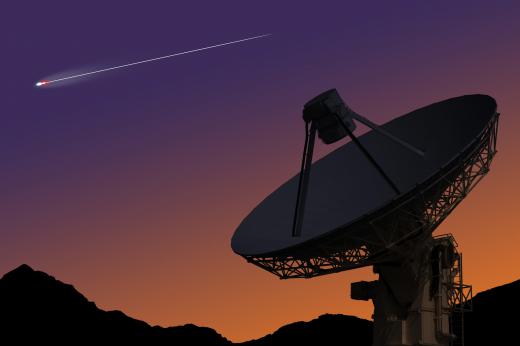What Is the Accelerating Universe?
When someone looks up at the modern night sky, the starscape he or she sees is different than it looked thousands of years ago. This is because every star visible from Earth is actually moving away from the planet. Research has shown that our solar system is part of an accelerating universe, in which every star is traveling outward from a central point at an ever-increasing rate of speed.
In the 1920s, physicists and astronomers debated the Big Bang theory. This concept stipulates that all matter in the universe was originally contained in a single, highly condensed form that expanded outward to create the universe in an event called the Big Bang. The question of whether this initial expansion ended or is ongoing had not been definitively answered at that time. Then, in 1929, astronomer Edwin Hubble addressed this question when he developed a way to measure a star's movement by analyzing the spectrum of light it emits.

Hubble observed a red shift — or change in red-colored light given off by stars — in his spectral analysis, which indicates that stars are moving away from the solar system at an increasing rate of speed. Conversely, a blue shift would have meant that stars are actually moving closer to Earth. His analysis showed that, not only is every star accelerating away from the Sun, but the further away a star is, the faster it is accelerating. Subsequent research has shown that this is not unique to the stars around Earth, but that every star in the observable universe, including the Sun, is accelerating away from a central point. This behavior of stars accelerating outward led scientists to describe ours as an accelerating universe.

There are two predominant scientific ideas concerning the behavior of the accelerating universe. One is that it follows an oscillating pattern. This theory holds that the universe began expanding outward after the Big Bang, but will slow down as the gravity of the universe overtakes the momentum of its acceleration. Then outward movement will come to a halt and all matter in the universe will begin to be pulled back towards the center. In what is called the Big Crunch, all matter in the universe will eventually condense back into the same highly condensed state it was in before the Big Bang.
The other idea concerning the fate of the accelerating universe is known as infinite expansion, which theorizes that the movement created by the Big Bang never ends. In other words, all the matter in the universe will continue to expand outward for all time and never be pulled back by gravity. Proponents, and some studying the Big Bang model, believe that this is due, in part, to something called dark energy. Although the nature and mechanics of this mysterious energy are still not fully understood, it is known that it causes stars and other interstellar matter to continuously accelerate and escape the inertial pull of gravity.
AS FEATURED ON:
AS FEATURED ON:












Discuss this Article
Post your comments